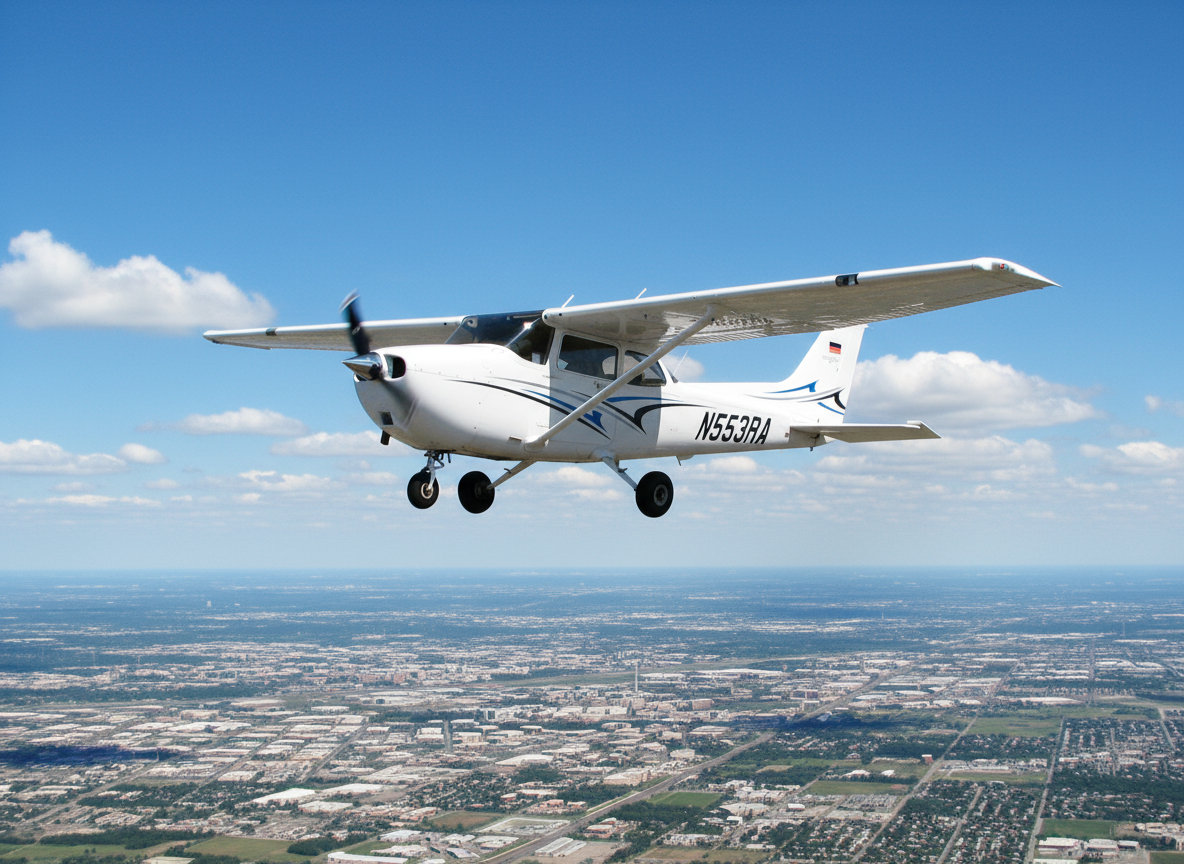
An Instrument Rating is an advanced certification that allows pilots to operate safely in low-visibility conditions using only the aircraft’s instruments for navigation and control. With this rating, you’ll build precision, discipline, and confidence to fly through clouds, rain, or fog under Instrument Flight Rules (IFR).
At Rich Aviation Services, our FAA-certified instructors provide the structured training you need to master instrument flying. Whether you’re pursuing a career or simply want to expand your skills as a private pilot, the Instrument Rating is an essential step.
*Three (3) hours of flight training must be conducted within the 2 calendar months preceding the test.
An Instrument Rating is an advanced pilot certification that allows aviators to fly safely in instrument meteorological conditions (IMC) — such as fog, rain, or clouds — using only the aircraft’s instruments for navigation and control.
Instrument-rated pilots operate under Instrument Flight Rules (IFR), following air traffic control instructions or FAA-filed flight plans. This training improves safety, expands flying opportunities, and is also a requirement for many professional flying jobs. Airline pilots, for example, must hold an Instrument Rating as part of their commercial pilot qualifications.
To maintain proficiency, instrument-rated pilots must complete instrument training every six months.
In the United States, the Instrument Rating applies across different aircraft categories:
Single-Engine Airplanes
Multi-Engine Airplanes
Rotorcraft (Helicopters)
Pilots must meet specific experience, knowledge, and proficiency requirements to earn an Instrument Rating, including passing the FAA knowledge test (written) and the practical test (oral exam and checkride).
There are several key benefits to pursuing an Instrument Rating:
Safer Flying Overall: Instrument-rated pilots can navigate safely in poor visibility using IFR procedures. Without this training, VFR-only pilots may be forced to land early in bad weather, which can be unsafe.
Fly in All Types of Weather: IFR training allows pilots to confidently operate in clouds, fog, and other low-visibility conditions by following air traffic control clearances and FAA-approved procedures.
Expanded Career Opportunities: An Instrument Rating is required for airline and commercial pilot roles, making it an essential step for anyone pursuing aviation as a profession.
Further Instruction Paths: Instrument-rated pilots are qualified to become instrument instructors, examiners, or check airmen, further broadening their career options.
VFR (Visual Flight Rules): Pilots navigate using outside visual references in clear weather conditions.
IFR (Instrument Flight Rules): Pilots navigate using only the aircraft’s instruments, allowing safe flight in low visibility and cloud cover.
To fly under IFR, pilots must hold an Instrument Rating and meet FAA training and testing requirements.
Enroll with a Certified Instructor: At Rich Aviation Services, our FAA-certified CFIIs guide you through both ground and flight training.
Flight Training: FAA requires 40 hours of instrument flying, including 15 with an instructor. Training may be completed in an aircraft or approved simulator.
Cross-Country IFR Flight: Complete at least one 250-nautical-mile IFR cross-country flight with approaches at multiple airports.
Testing: Pass the FAA knowledge test at an approved testing center.
Checkride: Successfully complete the oral and flight test with an FAA-designated examiner.
Once complete, you’ll earn your Instrument Rating and be qualified to fly safely under IFR.
On average, it takes about 3–6 months to complete Instrument Rating training, depending on how often you fly and how much experience you already have.
Some students finish more quickly if they already have significant cross-country or IFR training time logged. Others may take longer depending on availability of aircraft, instructor schedules, and personal commitments.
The FAA requires a minimum of 40 hours of instrument flight time, but most students exceed this before they’re fully proficient.
The cost of an Instrument Rating varies based on the type of aircraft used, instructor fees, and how many hours you need to complete training. At Rich Aviation Services, costs are based on:
Aircraft rental (hourly) — see our Fleet page for current rates
Instructor time (hourly) — CFI/CFII rates are listed with our training pricing
Testing fees — FAA knowledge test and examiner fees for the practical test
Most students complete training in aircraft such as the Cessna 172 Skyhawk, which balances affordability and reliability, though advanced training in glass-cockpit aircraft is also available.